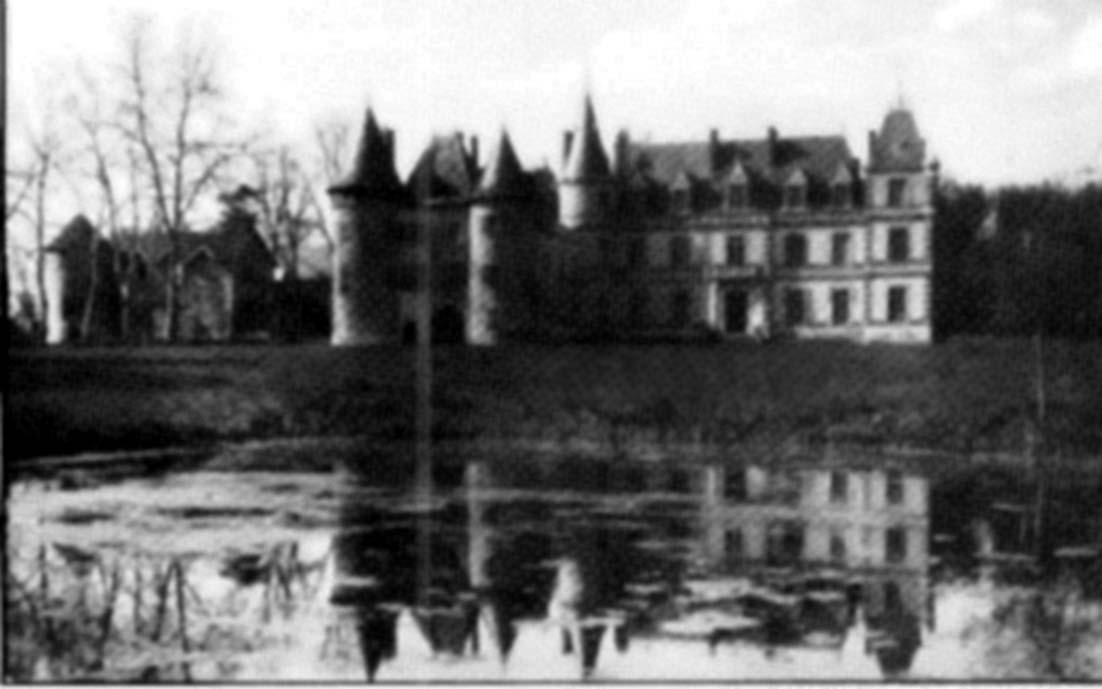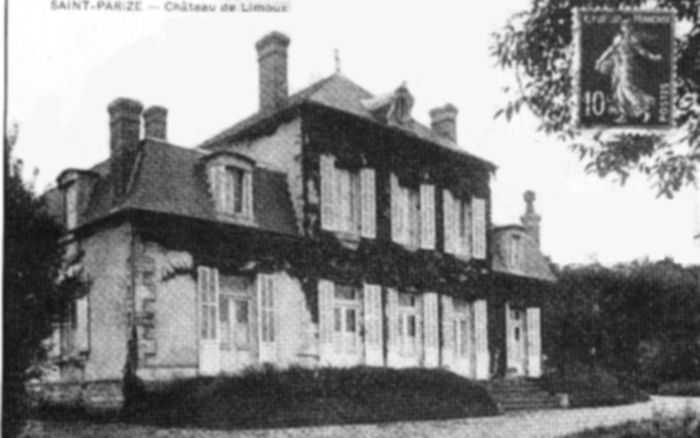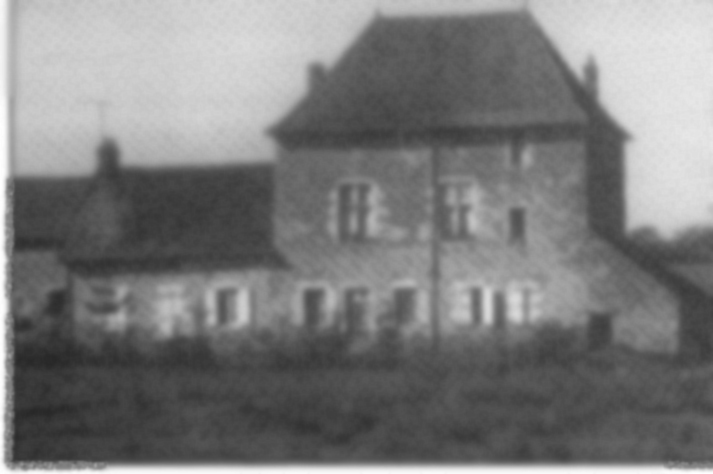 Chasseigne
Chasseigne
January 30, 1666, Jerome of Chasseigne compromised with Franois of Damas, knight of Malta, lord of St-Parize, about the rights which it owed in consequence of the death of Jean of Chasseigne, his brother.
November 3, 1689, a new division takes place between lady Marie the Stammerer, widow of lord Jerome of Chasseigne, having the guard of his children, and demoisel1e Antoinette Brisson, widow of Claude Challemoux, lord of Marigny.
September 25, 1702, with the marriage contract of Joseph-Franois of Chasseigne, knight, lord of Rosemont, Uxeloup, Luthenay and of Vesvre, wire of Jerome of Chasseigne, the mother of the future, to avoid the division of the ground of Chasseigne which it had reserved, wants that Joseph-Franois has the choice to take it for the sum of 26.000 pounds after his death. If it would refuse, the aforementioned lady the Stammerer gives it, in the same conditions, Henri of Chasseigne, lord of Pougny, his last wire.
July 25, 1703, a transaction takes place, with the castle of Uxeloup between Joseph-Franois of Chasseigne and its brother, Gabriel of Chasseigne. Gabriel desists towards his brother from his claims and Joseph-Franois makes him a pension for life of 50 pounds.
January 13, 1720, at the request of Marie lady the Stammerer, took place the adjudication on sale by auction of the ground of Chasseigne.
The aforementioned lady because of its great age, not being in a position to more put forward the aforementioned ground nor to pay the loads which affected on "are joined that the sior Gabriel of Chasseigne, which had been come to withdraw with his wife in the house of the aforementioned lady the Stammerer, consumed all the income of the aforementioned ground, that is to say by its expenditure or the continual subtractions which it made with the aforementioned lady the Stammerer, of which it diverted the village daily, the wine, the linen, the crockery, the money and papers, which put to lady the Stammerer in impossibility of paying the loads of the aforementioned ground.
The ground of Chasseigne, which consisted of castle, enclosure, 4 fields, vines of the capacity of 140 men, tilery, louagery, meadows of reserve, drink, dimes and taxable quota, was allocated, January 13, 1720, for 35.500 pounds with Dame Mahyn, widow of the sior Flamen of Coudray, live Nevers.
Joseph-Franois of Chasseigne died on April 10, 1720 and was buried in Nevers.
Marie de Mahy died on October 6, 1732. Of its union with Guillaume Flamen of Coudray, he left a son and three girls.
The son, Gilbert Flamen, then took the titles of lord of
Coudray and Chasseigne. November 29, 1765, he was
godfather of a bell with St-Parize. He died without
posterity on May 6, 1784.
It was the niece, Anne-Marie and the nephew,
Claude-Louis Franois, who inherited Gilbert Flamen of Coudray.
C1aude-Louis Franois had a son, Louis-Marie and a girl, GabrielleMarie, which married on June 4, 1789, Gabriel-Etienne, count de Montrichard, knight of SaintGeorges, lord of Saint Martin's day in Franche-Comté. The future one had in dowry the ground of Chasseigne, and the stronghold of Chaumont, close to Chevenon.
The weapons of the family of the Montrichard family are of squirrel fur to the cross of mouths. They are seen on several stained glasses of the Church of St-Parize.
April 27, 1793, Gabriel-Etienne Montrichard and his wife
had to lend the oath prescribed by the indictment of the police chiefs
of Convention.
The Montrichard citizen was stopped like suspect and was
imprisoned in Nevers next 11 May.
The General Council of the commune, the Inspection committee and
all the inhabitants wrote at once in his favour, a petition.
This step hastened the release of the Montrichard citizen.
His son, Louis-Henri-Franois-Gabriel-Ferdinand,
count de Montrichard, married, August 27
1811, Louise-Alexandrine of Rochefoucault. He was gentleman of the room of king Charles ' - In 1843,
he was godfather of the small bell of St-Parize.
May 4, 1812 was born Louis-Gabriel-Armand de Montrichard, wire of the precedents. It married on July 30, in Bazoches, Marie Flicit Hurault de Vibraye. From this union were born three wire and a girl. One ain, Marie-Gaston-Gabriel-Annand married on July 2, 1873, Alix-Charlotte-Michelle of Damas. He had in dowry the castle and the ground of Chasseigne. He was a mayor of St-Parize from January 1878 to January 1881. In 1894, it created in the commune, under the name of rural Caisse, a bank of agricultural credit and in 1898, an agricultural trade union.
His son, Marie-Louis-Joseph-Gabriel, count de Montrichard, owner of Chasseigne and Soultrait, were born on November 15, 1879. It married in January 1906, Miss de Gubriant. He was a mayor of St-Parize from June 1935 to May 1945.
According to Antoine Desforges.
 Castle of Limoux
Castle of Limoux
Created in 1981, on the initiative of the
communes of Saint Pierre-the-Motier, Saint-Parize-le-Chtel,
Chantenay-Saint-Imbert, Langeron and Mars-sur-Allier combine, this old
hamlet in the east of the commune whose origin of the name answers the
nature of the place is located on the left of Coltre (affluent of
the Loire) in an area
Marshy in the past 200 hectares were drained by the creation of an arm of Coltre to give muddy grounds (1).
Origin: limus, silt whose derivative limosus,
within the meaning of muddy gave LIMOUX.
In 1205 the Chapter of Nevers acquired 12 sums of money
of taxable quota on the dimes of Moiry, Lange and Limoux.
The justice of Limoux belonged then part to the abbot of Saint Martin's day of Nevers, part to the lord of SaintParize.
A branch of the Prisye family became owner of Limoux.
In 1205 the Chapter of Nevers acquired 12 sums of money
of taxable quota on the dimes of Moiry, Lange and Limoux.
The justice of Limoux belonged then part to the abbot of
Saint Martin's day of Nevers, part to the lord of SaintParize.
A branch of the Prisye family became owner of Limoux by marriage and took the name of this ground. This family, originating in Italy, appears in the chevinage of Nevers since 1580. She provided distinguished officers, lawyers and doctors. Prisye de Limoux had, moreover, the strongholds of Azy-the-Sharp, Paranche and Chabb.
Before the Revolution, this hamlet had the
characteristic to belong a ' year to the parish of Saint-Parize and
the following year with that of Luthenay.
In Year 10 of the Revolution, the population of Limoux
counted 52 people divided into 10 families of which one of vine
growers.
To the beginning of the XIX, century, the castle of
Limoux belonged to Mr. Colas, to judge in Nevers, and the field of
Limoux with Mr. Philippe Bardin.
(1) Memories of the Academic Company of Nivernais. Volume 35 (1933).
 Lange
Lange
There was formerly in Lange a small strong castle of the XIIth century. One still saw at the beginning of the years 1900 the remainders of an old woman tower having formed part of the old fortress.
The existing castle dates from XVe century, the windows
are in accodance with mullions in cross, with the top of the door of
entry sees a bretche. The oldest document concerning this
ground is 1205, it is a contract of acquisition by
the Chapter of Nevers of the 12 last of taxable quota on the dimes of
Moiry, Lange and Limoux. Lange was a
concerning sub-fief St-Parize. It exerted only the
average and low justice.
The first lord of Lange which is known for us is Regnaud
de Lange. It is probablement.Jean of Lange, rider, who made build the current castle. At that time he is known as lord of Lange, Lchenaut,
Chevannes. In 1467, it appears in the monsters or
reviews of the count de Nevers as sergeant.
In 1525, was born in this residence Nicolas de Lange,
small son of the precedent. It studied in Bologna and in
Padoueet became one of largest the juriconsultes of its time. Initially lawyer of the King to the prsidial of Lyon,
he was a then general lieutenant in the
seneschalsy of this city, then to advise and finally first president
at the Parliament of Dombes. It was the only magistrate of Lyon
which had courage to be opposed to the massacre of the St.
Bartholomew's Day Massacre. It died on April 6, 1606, at
the 81 years age. A street of Nevers bears its name. It had his woman, Louise de Crollier, an only daughter,
Lonore, which in 1598 married Philippe de Lange.
In 1618, Lange belonged to Jean and to George of
Villeneuve, to knights, to lords and to barons de Joux, Noyrie,
Prcellay and Montigny. They remained then with
St-Parize.
November 28, 1749, Jean-Joseph of Villeneuve, resident
in Lyon, sold the ground of Lange and its dependences, in Jacques
Decantes, ploughman with Uxeloup. The sior Decantes is
entitled "lord of Lange then". At this period Lange
counts a score of inhabitants.